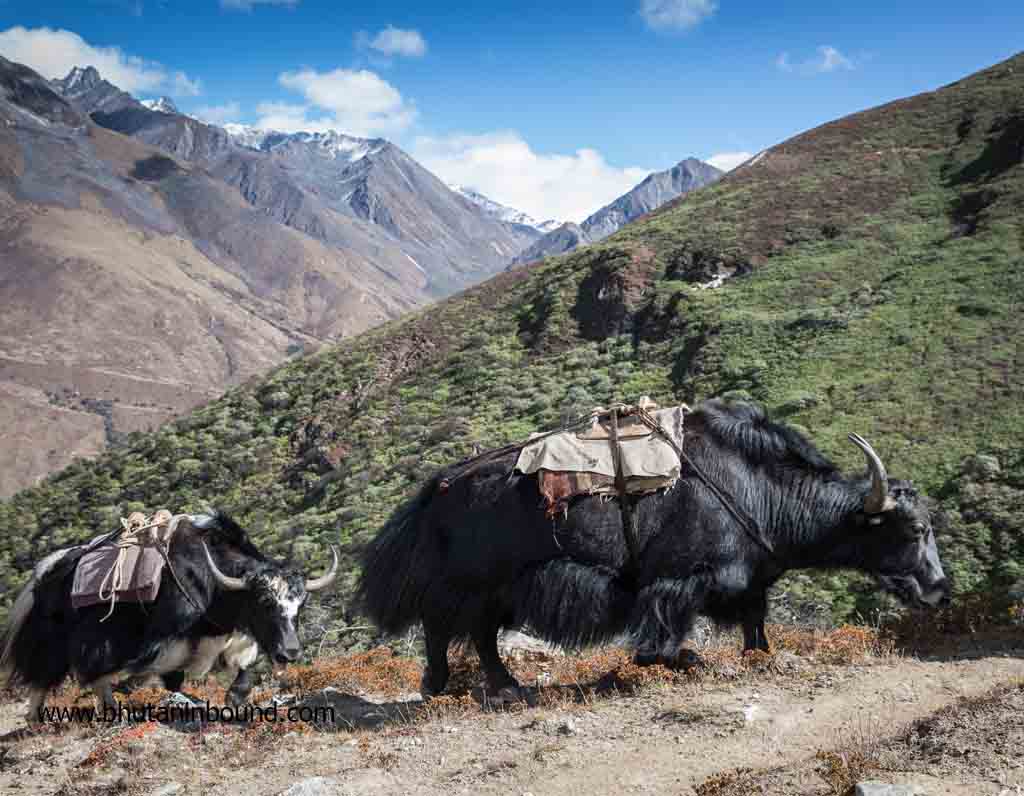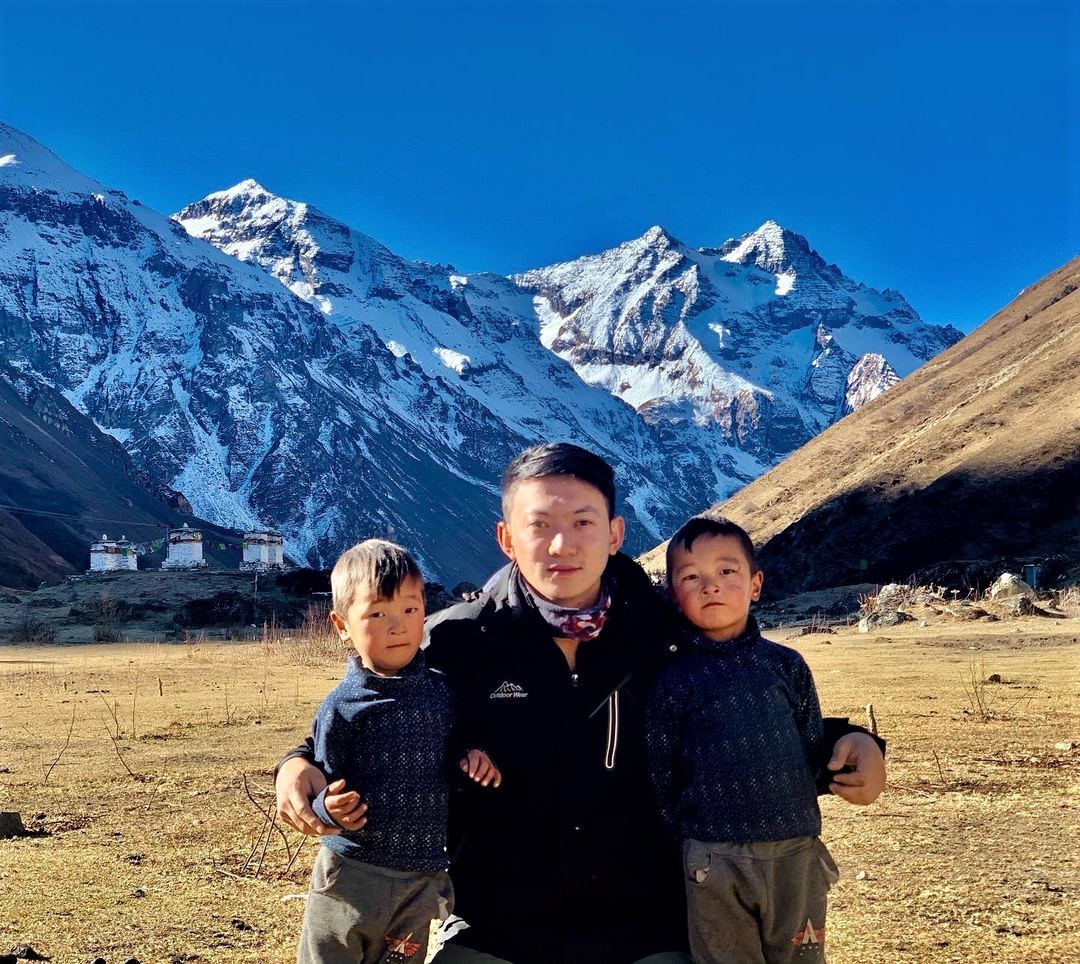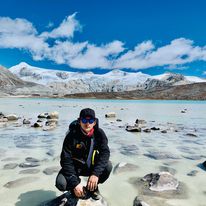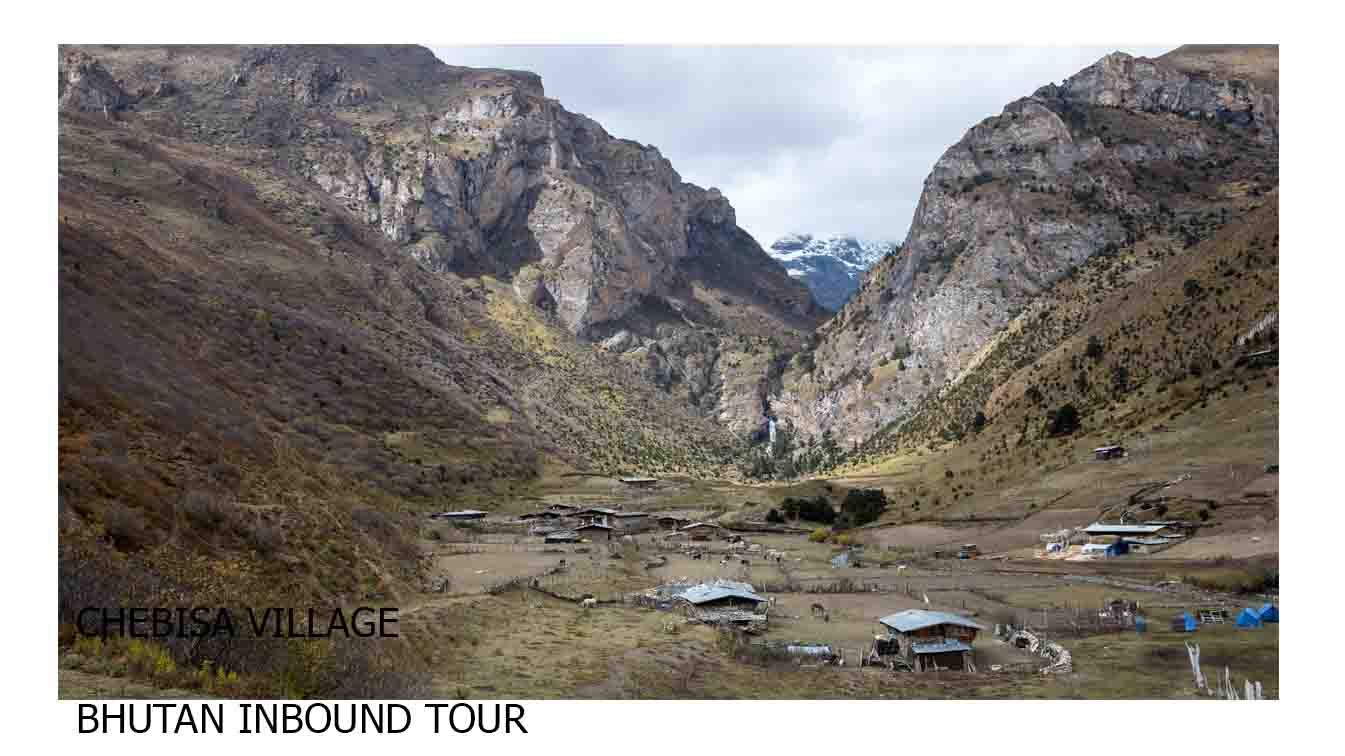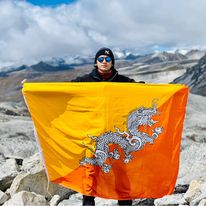Snowman trek II
Snowman Trek is one of the most difficult treks in the world. It is the extension of Laya-Gasa trek. The best time for Snowman Trek is summer. Ensure to have a great experience with us!
Snowman Trek is a long walk on ancient trade routes and worn yak trails. It crosses 11 thin air passes and winds through rhododendron forests and hidden valleys fluttered with prayer flags. Passing in the shadow of sacred peaks and Tibet’s border, the journey crosses the remote Lunana region of Bhutan. The only way to travel this route is on foot, and those who complete the journey earn respect.
The snowman trek, as this magical amble through this remote bastion of Himalayan Buddhism, is known as the toughest in the world. Only 50% of those who set out on the Snowman Trek ever finish. In fact, more people have stood on the summit of Mount Everest in neighboring Nepal. Part of the reason few make it is the length of the trek.
With 216 miles on foot at average elevations of roughly 14,000 feet, it takes 25 days of walking some 10 to 15 miles a day at high altitudes. If any emergencies arise, rescue by horseback is lengthy and arduous, and evacuation by helicopters is difficult and expensive. And if it snows before you cross the 17,400-foot Rinchen ZoeLa Pass, the trail’s highest elevation, you risk the possibility of wintering in a Lunana village trapped in by high, snow-covered peaks. Not a bad place to stay, if you have enough food and like the cold.
But this is not a story about the Snowman Trek, nor the long hours of trekking while gasping for breath. It is not about the biting cold winds and slashing storms that hit unexpectedly or the endless hills that seem to grow as you ascend them. It is not about the half-million steps it takes, nor is it about what you bring to help your feet, body, and mind to make it.
No. This is a story about what you leave behind – about the world you depart to enter another.
![]() Duration: 29 Nights/ 30 Days
Duration: 29 Nights/ 30 Days
![]() Location:Paro – Gunitsawa Village – Sharna Zampa – Thangthangkha – Jangothang – Lingshi – Chebisa – Shomuthang – Robluthang – Limithang – Laya – Rhodophu – Narethang – Tarina – Woche – Lhedi – Thanza – Tshorim- Gangkar Puensum Basecamp – Geshe Woma – Warathang – Duer Tsachu – Tshochenchen- Bumthang – Gangtey- Thimphu
Location:Paro – Gunitsawa Village – Sharna Zampa – Thangthangkha – Jangothang – Lingshi – Chebisa – Shomuthang – Robluthang – Limithang – Laya – Rhodophu – Narethang – Tarina – Woche – Lhedi – Thanza – Tshorim- Gangkar Puensum Basecamp – Geshe Woma – Warathang – Duer Tsachu – Tshochenchen- Bumthang – Gangtey- Thimphu
Day 01: Arrive At Paro
Paro is a beautiful valley located in Western Bhutan with an area of 2800 Square kilometers. Breathtaking Lhakhangs and monasteries are perched on mountain hills. Two sacred rivers with its respective source at Jumolhari and Chumo Phug mountains make their way through Paro valley enhancing its beauty and grandeur
Visit “Paro Dzong” also known as Paro Rinpung Dzong – “the fortress of the heap of jewels”. This structure serves as the house for the district monastic body and government administrative office of Paro.
Visit Ta Dzong, which in the past served as a watchtower for Paro Dzong for protection from invaders. Now, it is the National Museum of Bhutan and houses artifacts dating back to 4000 BCE.
Take a stroll through Paro town, a street of typical Bhutanese traditional buildings.
Overnight: Hotel in Paro
Day 02: Acclimatization Hike To Taktsang Monastery
Taktsang Monastery, popularly known as the “Tiger’s Nest” is perched on the side of a cliff at a height of 900m above the Paro valley. It is considered a signature spot for the tourist. It is a Gem of a Paro Valley. Nestled up in a cliff, it is considered one of the twelve wonders of the world.
After breakfast, drive to Ramthangka to hike up to the viewpoint of Taktsang (Tiger’s nest) (2950m). The round trip will take about two to three hours. The legend says that in the 8th century, Guru Rinpoche visited and meditated here for some time. The place now is one of the holiest pilgrim sites for the Mahayana Buddhists.
Visit the ancient Kichu Lhakhang which dates back to the 7th century.
Overnight: Hotel in Paro
Day 03: Gunitsawa Village – Shana Zampa
This trek begins at Gunitsawa Village where you pass the army post. At the army check post, your trek permit (provided by your tour operator) will be checked and endorsed. The campsite is on the opposite side of the river, not far from Gunitsawa. Overnight at Campsite
Distance | 40 mins |
Time | 40 mins |
Camp Altitude | 2,850 m
|
Day 04: Shana Zampa – Thangthangka
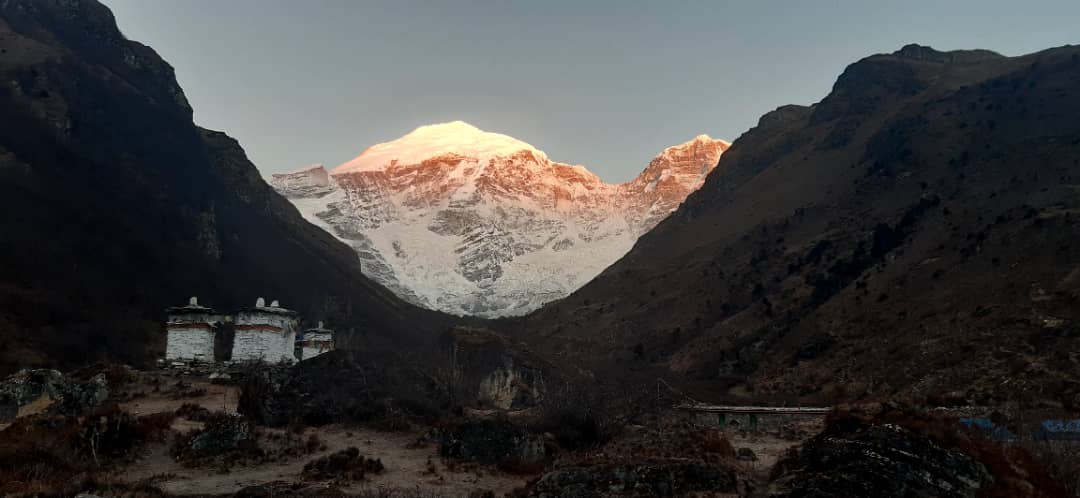
On this long day, the trail continues with lots of small ups and downs. After going uphill through the river valley the valley finally narrows gradually to a mere path which descends to a meadow where a camp will be set up. From here, if weather permits, you will have the first great view of Mt. Jomolhari. Overnight at Campsite.
Distance | 22 km |
Time | 7-8 hours |
Camp Altitude | 3,610 m |
Day 05: Thangthangka – Jangothang
If you did not see Mt. Jomolhari the previous evening, you will still have a chance to get a great view early this morning. This morning the trek continues up the Paro Chhu valley which widens into patches of alpine meadow and scanty growths of forest. You will cross an army checkpoint along the way and enjoy a spectacular view of high mountain ridges and snow-capped peaks. In this area yaks and their herder’s homes become a regular feature of the landscape. Passing the villages Soe, Takethang, and Dangochang is another asset on this day. After reaching Jangothang, one of the most beautiful campsites of the Himalayas, you will again have a spectacular view of Mount Jomolhari.
Distance | 19 km |
Time | 5-6 hours |
Ascent | Ascent 480 m |
Camp Altitude | 4,080 m |
Day 06: Jangothang Halt
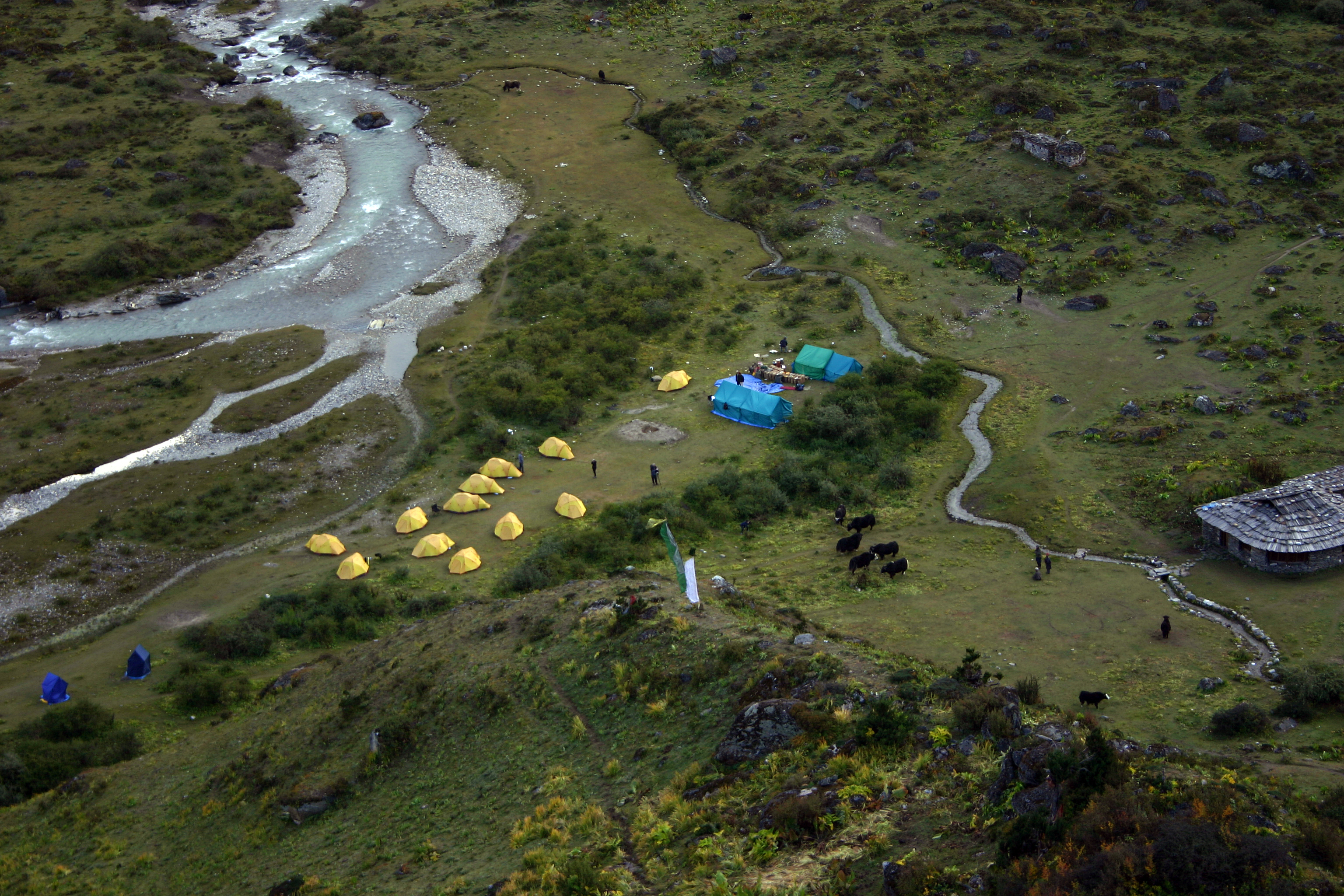
The rest day in Jangothang provides plenty of possibilities for day hikes with great views of lakes and snow-capped mountains such as Jomolhari and Jichu Drake. There are good chances to spot some blue sheep on the upper slopes of the valley. Jangothang is a perfect environment for your acclimatization. You can also trek up to Tosoh or hike around the area. There are good short hiking trails in three directions. Jomolhari and its subsidiary mountain chains lie directly west, Jichu Drake to the north and there are a number of unclimbed peaks to the east.
Day 07: Jangothang – Lingshi
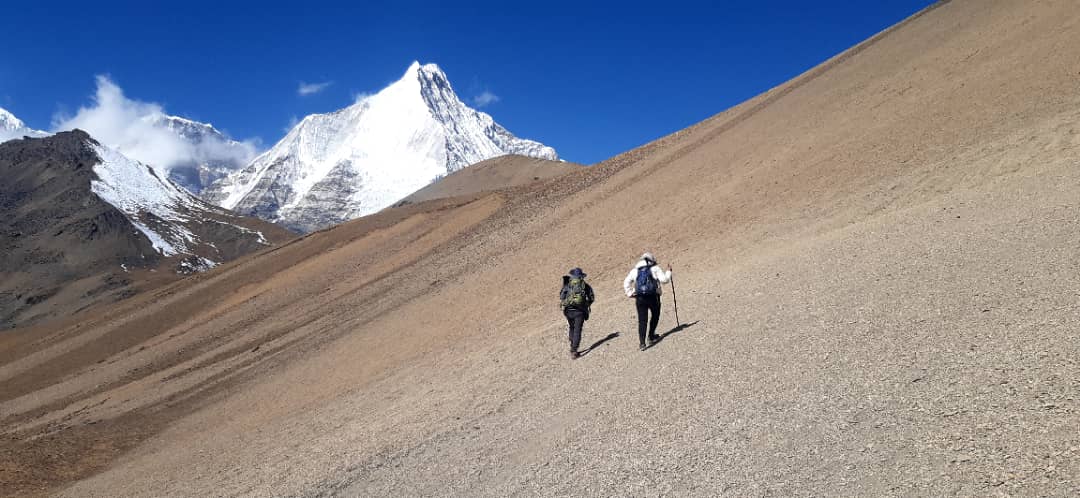
This is one of the longest days of the trek. A short distance from the camp the trail begins climbing rapidly for about half an hour and then becomes a gradual ascent to the Nyilila pass at 4,870m. While on the climb enjoy the surroundings. You might see herds of blue sheep grazing on the slopes of the mountains. From the pass you will have spectacular views of Mt. Jomolhari, Jichu Drake, and Tsherimgang, all of them rising above 7,000m. It’s a gradual descent to the camp where you will pass by some of the yak herder’s tents, made from yak wool. The herders use these tents while traveling to various pastures for their yaks. As you come down into the Lingshi basin, a beautiful U-shaped valley, you get a wonderful view of Lingshi Dzong on clear days. Tsherimgang and its glaciers rise up at the north end of the valley. The campsite is next to a stone hut you reach just before Lingshi Dzong.
Distance | 18 km |
Time | 6-7 hours |
Ascent | Ascent 840 m, descent 870 m |
Camp Altitude | 4,010 m |
Day 08: Lingshi – Chebisa
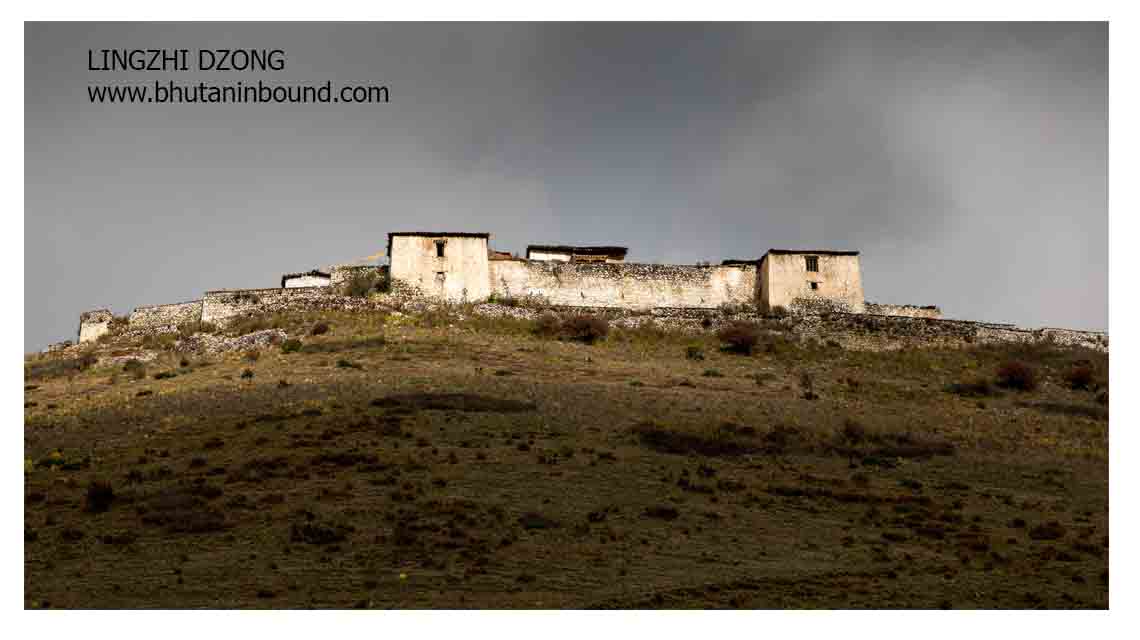
Today is the shortest walking day, and you can really take it easy. Shortly after starting you will reach a Chorten below Lingshi Dzong. Here, you have the choice of staying on the main trail or taking a detour up to the Lingshi Dzong (4,220m), which sits right atop a high ridge. This Dzong is under reconstruction from a 2011 earthquake that damaged its central building. In addition to a very special atmosphere of mystic tranquility, Lingshi Dzong provides a great view over the valley. After Lingshi Dzong you will be passing the villages of Lingshi and Goyul. In Goyul, the stone houses are clustered together to form a small compact village that is unusual in Bhutan where settlements are usually scattered. On reaching the campsite at Chebisa you will have plenty of time to visit the village houses if you feel up to it. There is also a beautiful waterfall located behind the village that is worth visiting.
Distance | 10 km |
Time | 5-6 hours |
Ascent | Ascent 280 m, descent 410 m |
Camp Altitude | 3,880 m |
Day 09: Chebisa – Shomuthang
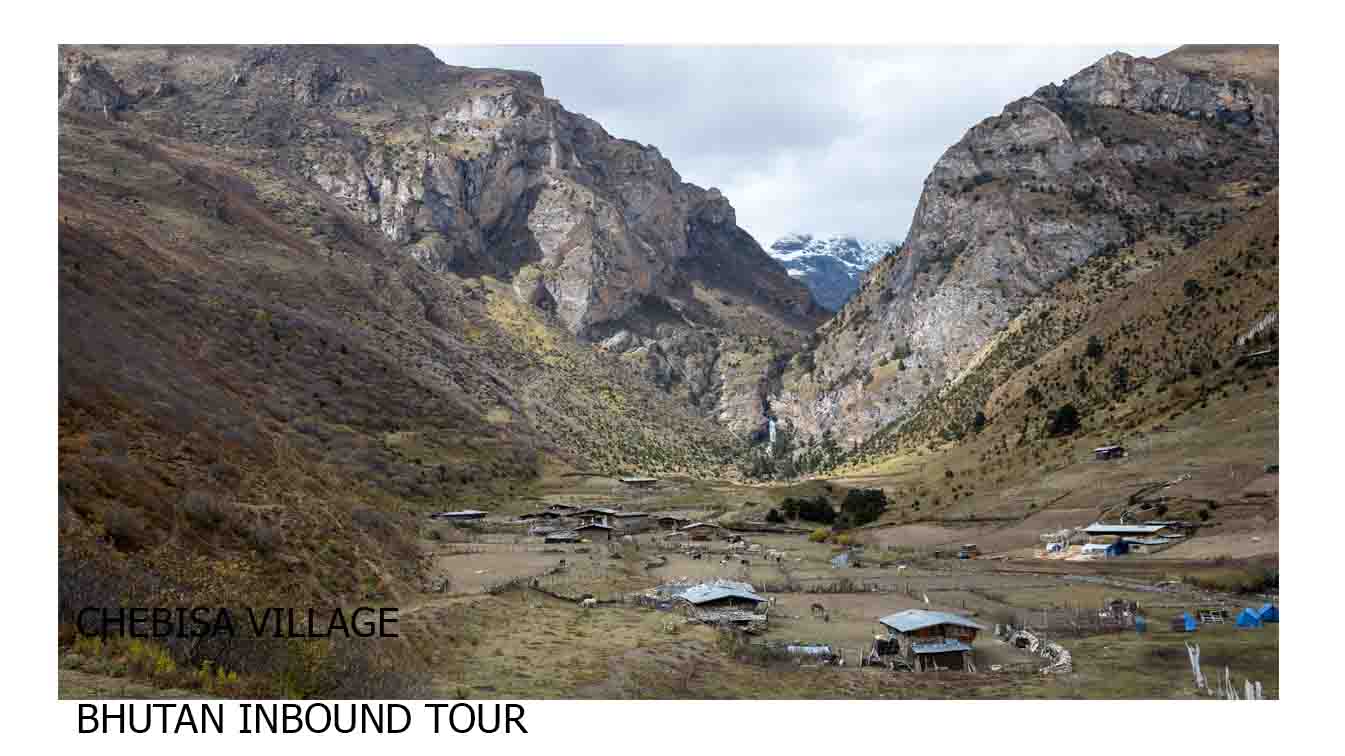
The morning starts with a long ascent behind Chebisa Village (2-3 hours) through a wide pastureland towards Gobu La (pass). On the way, you will see a few people herding yaks. There is also a great chance to spot large herds of blue sheep above the trail. After crossing Gobu La (4,410m), you descend into the valley, then climb again a little bit, before descending again to Shakshepasa (3,980), a large U-shaped valley. Climbing from here you will finally reach the campsite at Shomuthang, above a river, which is a tributary of the Nochu River.
Distance | 17 km |
Time | 6-7 hours |
Ascent | Ascent 890 m, descent 540 m |
Camp Altitude | 4,220 m |
Day 10: Shomuthang – Robluthang
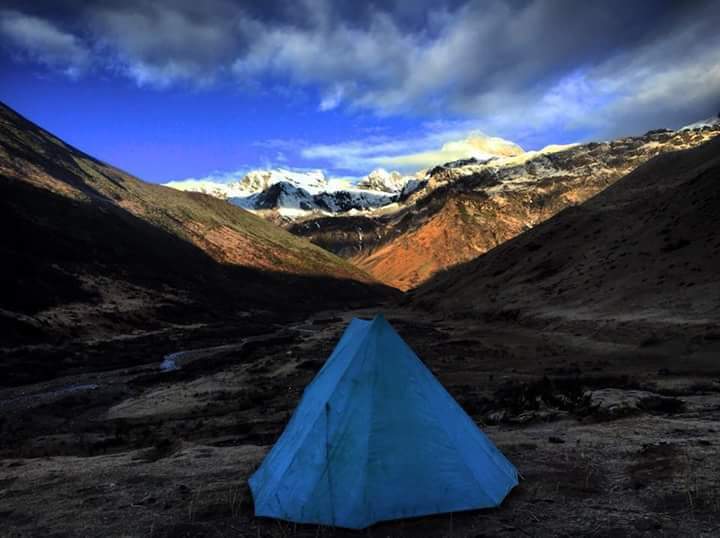
You begin by climbing up the valley to view Kang Bum (6,526 m) and some edelweiss. After two hours of climbing you will reach Jhari La (4,750m), from where you catch the first glimpse of Sinche La, the pass you will have to cross the day after. The big snow peak in the north is Gangchhenta 6,840 m, better known as the Great Tiger Mountain. If the weather is clear, Tserim Kang and the top of Jomolhari will be visible. The camp by the river is called Tsheri Jathang located in a beautiful wide and remote valley. Herds of takin, the Bhutanese National Animal, migrate to this valley in summer and remain for about four months. The valley has been declared a takin sanctuary. Climb up a little bit and you will reach the campsite at Robluthang in a rocky meadow.
Distance | 18 km |
Time | 6-7 hours |
Ascent | Ascent 700 m, descent 760 m |
Camp Altitude | 4,160 m |
Day 11: Robluthang – Limithang
The trek starts out with an initial 40-60mins ascent before gradually raising for another 1.5 hours through a boulder field. It is then a 1-hour steep ascent before reaching Sinche La (5,005m) – the final and highest pass on the trek if you don’t intend to continue the Snowman trek from Laya onwards. As you descend the far side of the pass you will see an impressive terminal moraine and a glacial lake at the foot of the valley. You can see classic examples of lateral moraines where the glacier has pushed rocks up both sides of the valley. Below the moraine, you cross the Kango Chhu and soon reach the Limithang campsite. The peak of Gangchhenta towers over the campsite even though it’s quite a distance away.
Distance | 19 km |
Time | 6-7 hours |
Ascent | Ascent 850 m, descent 870 m |
Camp Altitude | 4,140 m |
Day 12: Limithang – Laya
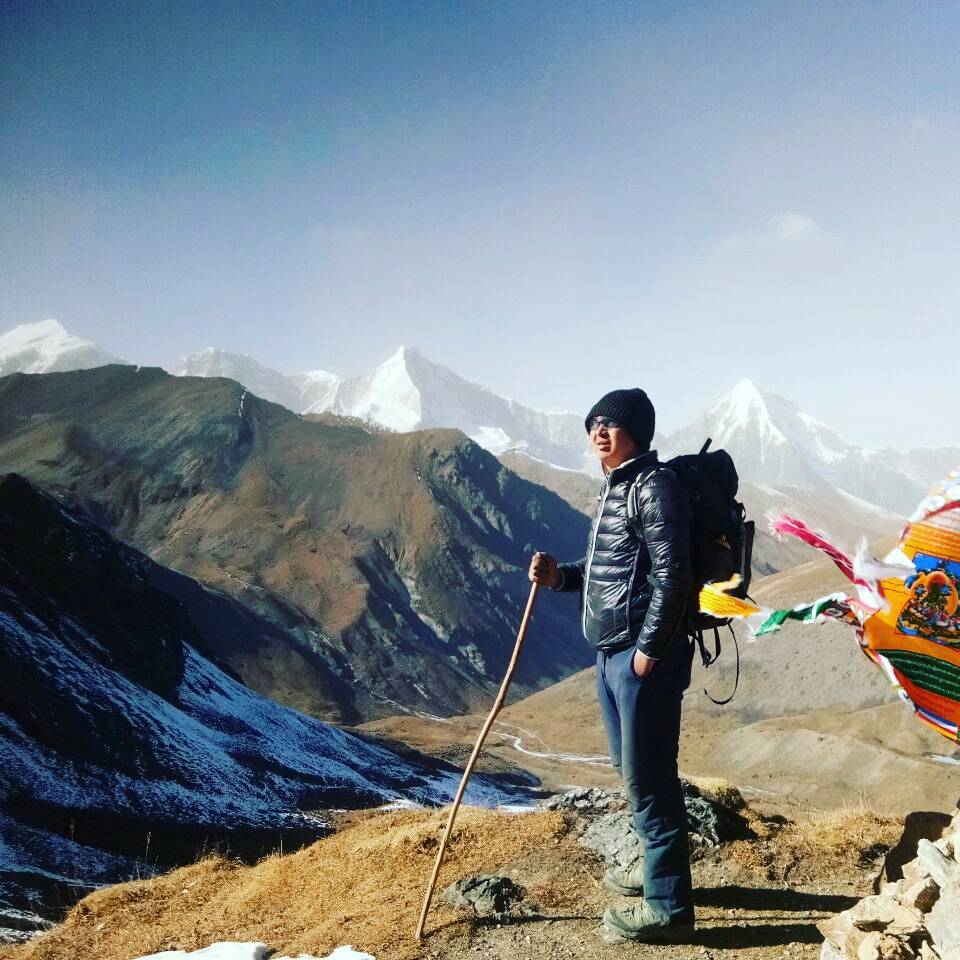
Today, you walk downhill all the way along a narrow, winding river valley. After a long time, the trail takes you through a densely forested region. The trail leads you to the west side of Laya village. From the west of the village, you will have spectacular views of Mt. Gangchhenta and Mt. Masagang. In the village center are a community school and a basic health unit with a telephone connection.
Distance | 10 km |
Time | 4-5 hours |
Ascent | Ascent 60 m, descent 340 m |
Camp Altitude | 3,840 m |
Day 13: Rest / Acclimatization Day In Laya
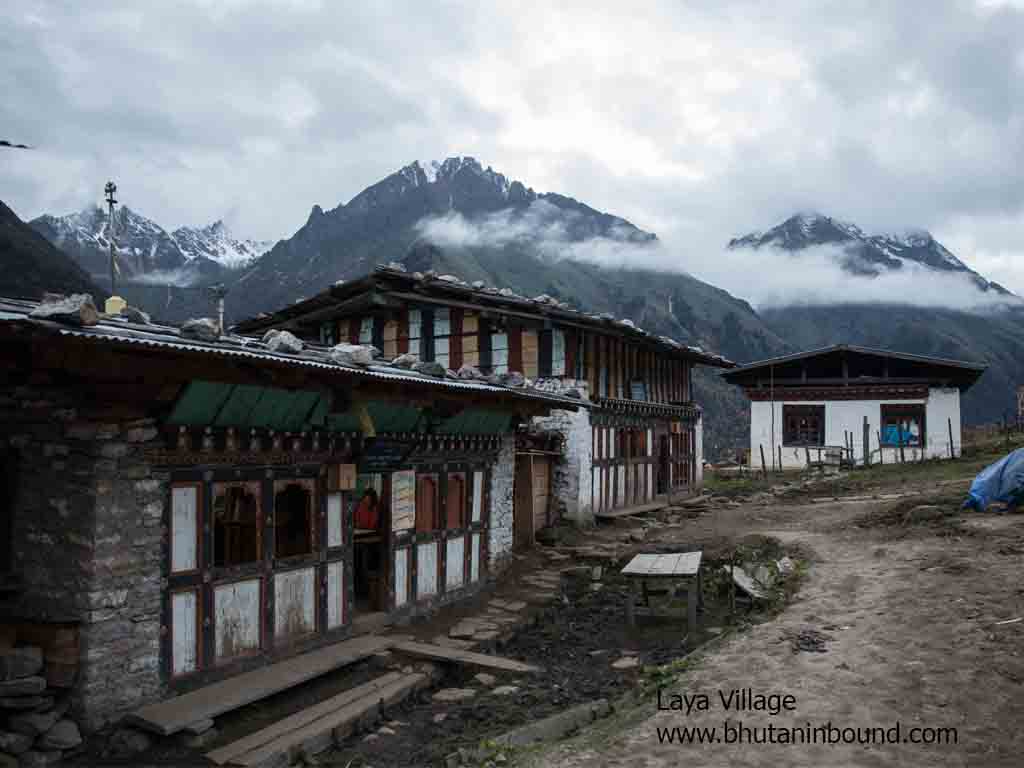
If you have trekked from Paro Valley you should spend a day recuperating from the trek to Laya and preparing yourself for the rest of this challenging but spectacular trek. If you have started from Gasa (Punakha) you should also walk up to Laya to acclimatize, and not just stay at the trail junction to Lunana. It’s worthwhile to spend one day in Laya just for the great views from Laya and its extraordinary inhabitants.
Day 14: Laya – Rhoduphu
From Laya, we descend to an army camp and continue following the river till the turn-off point to Rhoduphu. After lunch, the climb continues through rhododendron bushes till you reach the camp at Roduphu just next to the Rhodu Chhu.
Distance | 19 km |
Time | 6-8 hours |
Ascent | Ascent 1,030 m, descent 750 m |
Camp Altitude | 4,160 m |
Day 15: Rhodophu – Narethang
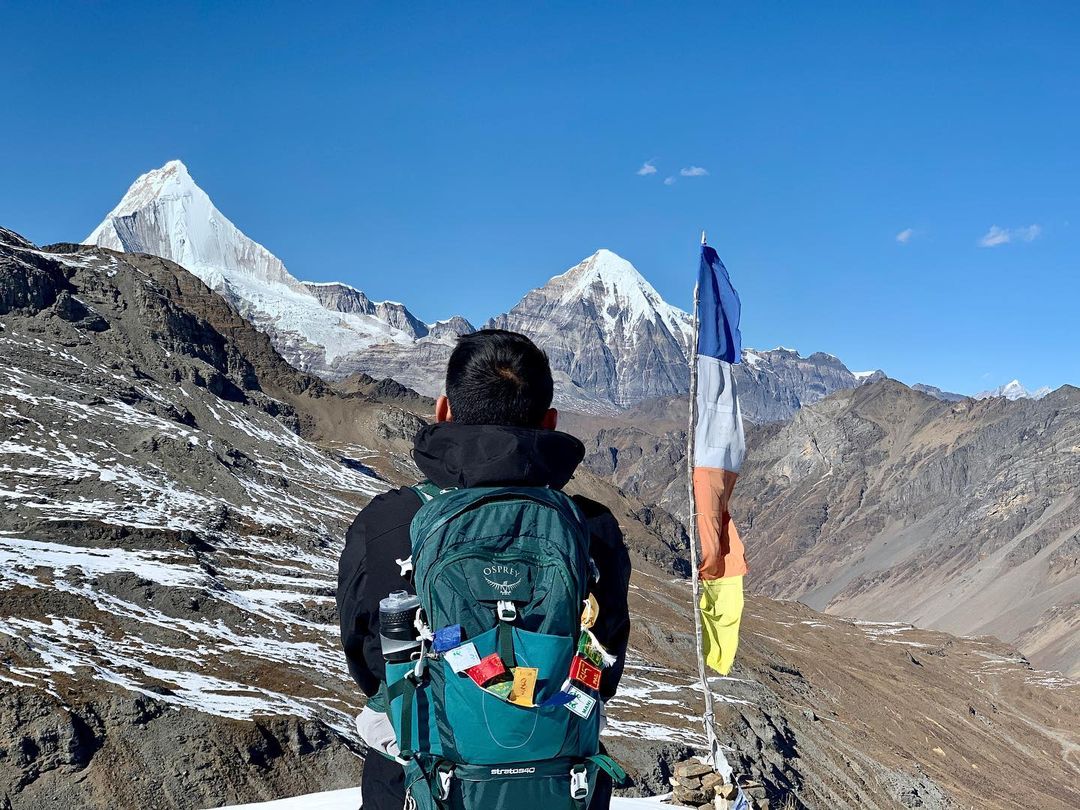
After following the river for about half an hour you will have a steady climb to a high open valley at 4,600m and then further up to Tsomo La (4,900m). Tsomo La offers a superb view of Lunana, Mount Jomolhari and Jichu Drake, and the Tibetan border. The route then crosses a flat, barren plateau at about 5,000m. The campsite at Narethang is towered by the peak of Gangla Karchung (6,395m).
Distance | 17 km |
Time | 5-6 hours |
Ascent | Ascent 740 m |
Camp Altitude | 4,900 m |
Day 16: Narethang – Tarina
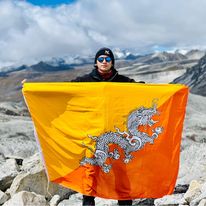
From the camp, you will climb for about an hour to Gangla Karchung La (5,120m). The view from the pass is breathtaking and the whole range of mountains including Jekangphu Gang (7,100m), Tsenda Kang, and Teri Gang (7,300m) can be seen. The pass descends along a large moraine. Again one has great views: a massive glacier descends from Teri Kang to a deep turquoise lake at its foot. Up here a glacial lake burst through its dam in the early 1960s, causing widespread damage and partially destroying Punakha Dzong. Finally, it is a very long descent through thick rhododendron to Tarina valley, where you will find several good campsites along the Tang Chhu.
Distance | 18 km |
Time | 5-6 hours |
Ascent | Ascent 270 m, descent 1,200 m |
Camp Altitude | 3,970 m |
Day 17: Tarina – Woche
The walk leads down through conifer forests following the upper ridges of the Pho Chhu, passing some impressive waterfalls. The trail then climbs over a ridge and drops to Woche, a settlement of a few houses, the first village in the Lunana region.
Distance | 17 km |
Time | 6-7 hours |
Ascent | Ascent 270 m, descent 330 m |
Camp Altitude | 3,910 m |
Day 18: Woche – Lhedi
The trek starts through juniper and fir forests, and further ahead, through rhododendron bushes. Climb up to Keche La pass (4,650m) where one can have a great view of the surrounding mountains again. After the pass, descend to the riverside walking through a village with a stunning view of Table Mountain and others. Follow up the river till Lhedi Village. Lhedi has a basic health unit, a school, and a wireless telephone connection.
Distance | 17 |
Time | 6-7 hours |
Ascent | Ascent 980 m, descent 1,190 m |
Camp Altitude | 3,700 m |
Day 19: Lhedi – Thanza
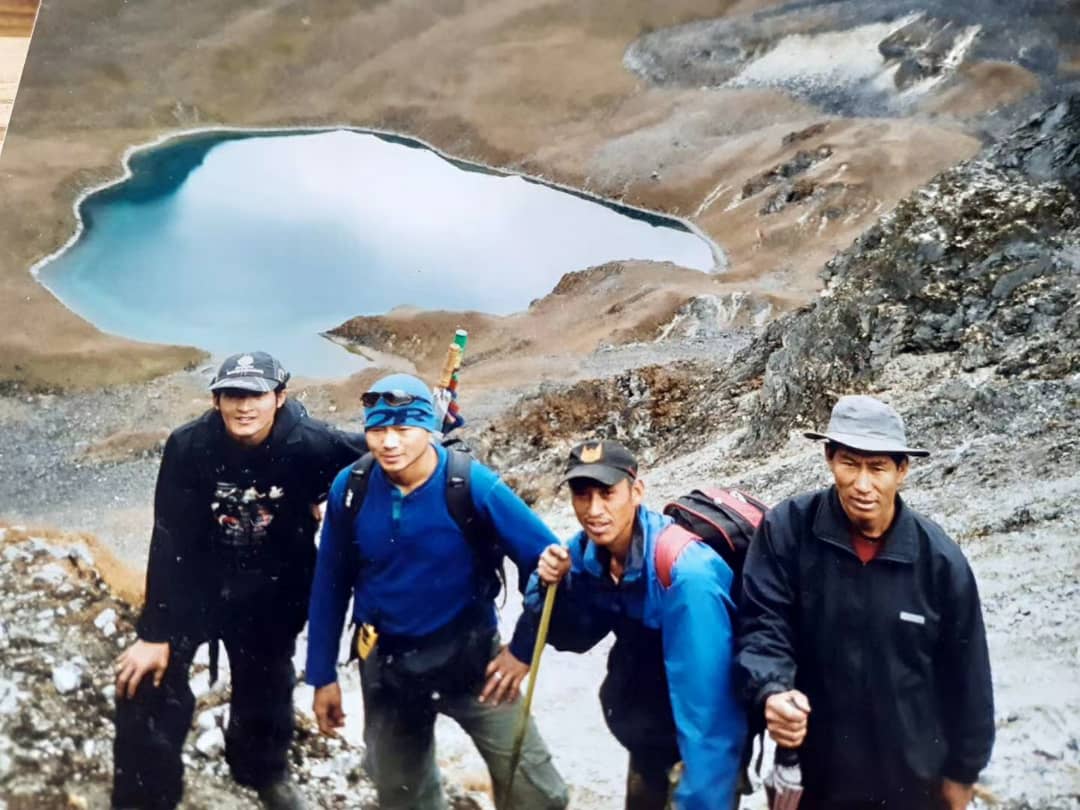
In clear weather, you will have great views of Table Mountain (7,100m). Around lunchtime, you will pass the small village of Chozo (4,090m) which has a dzong still in use. Reaching Thanza again you will have a great view of Table Mountain which forms a 3,000m high wall of snow and ice behind the village. Although there are possibilities to camp directly at Thanza, most groups prefer to camp in Thoencha.
Distance | 17 km |
Time | 7-8 hours |
Ascent | Ascent 450 m |
Camp Altitude | 4,150 m |
Day 20: Rest Day At Thanza
In Thanza walk around and experience some village life or climb up the ridge for fascinating views of lakes and mountains. But as it takes time to arrange new yaks (the yaks from Laya will not go further than Thanza) you might have to spend one day at Thanza anyway.
Day 21: Thanza – Tshorim
Having chosen the route to Bumthang the trek starts by climbing a ridge with a great view of Table Mountain and Thanza valley below. The ridge altitude is 4,500m and it rises gradually up to 4,650m. After lunch, walk upwards towards the left side of the bridge to enjoy the view of snow-capped mountains. You reach the campsite of Tshorim after climbing more ridges.
Distance | 8-9 hours |
Time | 8-9 hours |
Ascent | ……….. m |
Camp Altitude | 5,120 m |
Day 22: Tshorim – Gangkhar Puensum Base Camp
This is one of the highlights of the trek and the day starts with a short climb to the Tshorim Thso. You walk on the side of the lake enjoying a panoramic view of the Gophu La ranges. The last climb to the Gophu La pass (5,230m) is very short. After the pass descend to the base camp, walking along the ridge to enjoy a great view of Gangkhar Puensum. If interested, one can divert to the left side to climb up the pyramid peak for a better view or you can go down to the base camp nearby Sha Chhu.
Distance | 6-7 hours |
Time | 6-7 hours |
Ascent | ……….. m |
Camp Altitude | 4,970 m |
Day 23: Gangkar Puensum Base Camp – Geshe Woma
The trail further follows the Sha Chhu and descends gradually to Geshe Woma.
Distance | 6-7 hours |
Time | 6-7 hours |
Ascent | ……….. m |
Camp Altitude | 4,200 m |
Day 24: Geshe Woma – Warathang
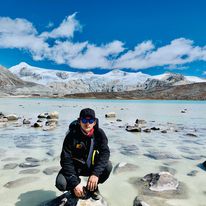
The path continues following Sha Chhu for two and a half hours until the stiff climb to Saka La begins. Visibility along the Saka La trail is poor so one must see the top of the ridge for guidance. After having lunch nearby a yak herders’ camp you climb up to Saka La (4,800m). The path then descends to a couple of lakes and another short ascent is stunning. The scenery once again is beautiful with small lakes and mountain peaks.
Distance | 8-9 hours |
Time | 8-9 hours |
Ascent | ……….. m |
Camp Altitude | 4,000 m |
Day 25: Warathang – Duer Tsachu
A one-hour climb leads to Juli La (4,700m). After the pass, you descend to the riverside through dense rhododendron, juniper, and conifer forests. After the bridge, a short climb leads to Duer Tsachu. These hot springs, where Guru Padmasambhava is supposed to have taken bath, might be the most stunningly beautiful hot springs of the Himalayas. You might want to spend an extra day at Duer Tsachu.
Distance | 5 hours |
Time | 5 hours |
Ascent | ……….. m |
Camp Altitude | 3,590 m |
Day 26: Duer Tsachu – Tshochenchen
From the hot springs, it is a long and steady climb again with great views of mountains in Lunana. You will also come across blue lakes and yak herder huts.
Distance | 8-9 hours |
Time | 8-9 hours |
Ascent | ……….. m |
Camp Altitude | 3,850 m |
Day 27: Tshochenchen – Duer Village
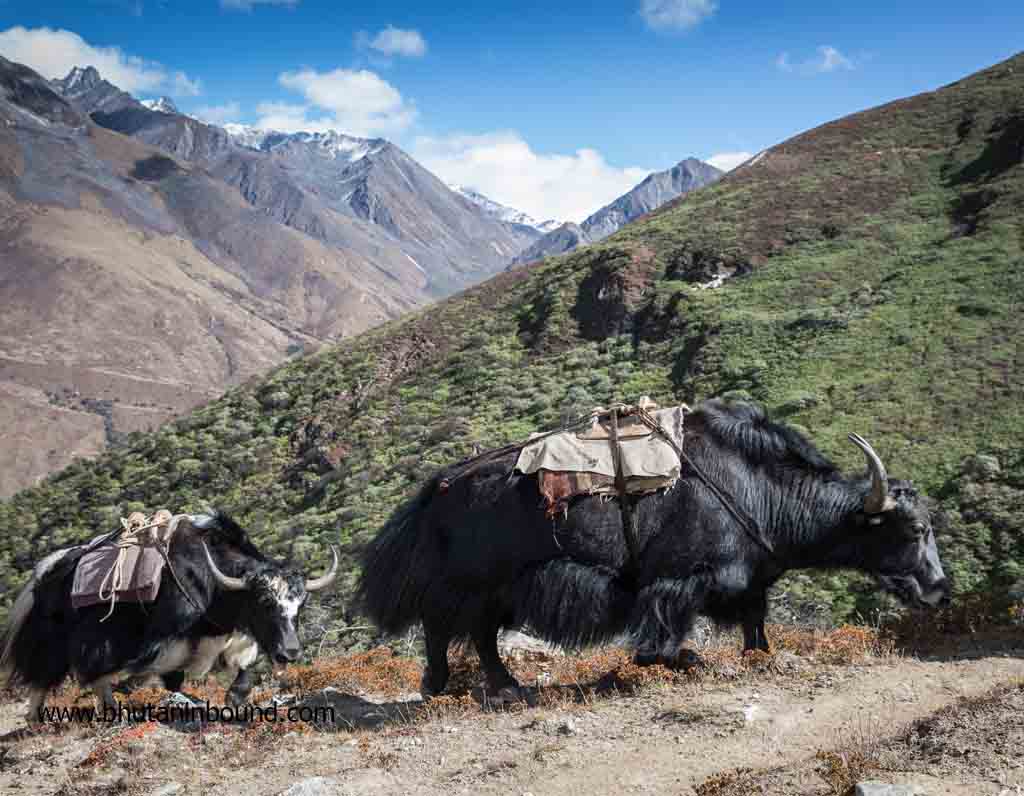
This is the last day of the trek and your porters change from yaks to horses. The path follows the Chamkhar Chhu, descending gradually with a few climbs in between. The trek ends here when you arrive at Duer village.
From here you drive to Jakar (Bumthang).
Snowman Trek II- FInish
Day 28: Bumthang To Gangtey (188Kms/6 Hours)
Drive to Gangtey at 2,900 meters. Enjoy the views of the immense and remote Phobjikha valley and the black mountain ranges.
Stop for lunch at Trongsa and visit the Trongsa Dzong and Chendebji Chorten on the way. Climb up to Pele La Pass (3,350 meters) before reaching Gangtey valley.
On arrival visit the Gangtey Monastery overlooking the glacial valley of the valley. Gangtey is the site where black-necked cranes visit in their hundreds in November each year after spending the summer in Tibet.
Overnight: Hotel in Gangtey
Day 29: Gangtey To Thimphu (154Kms/6 Hours)
Today you will drive to Thimphu via Dochula Pass. On the way stop at Chimi Lhakhang- take a walk through the rice paddy field and visit the temple of the Divine Madman.
Continue to Thimphu.
In the evening explore Thimphu city the only city in the world without a single traffic light.
Overnight: Hotel in Thimphu.
Day 30: Thimphu To Paro (54Kms/1 Hours)
After breakfast, you will drive to the airport. Our representative will bid you farewell.
TOUR HIGHLIGHTS
Endeavor on one of the most difficult trekking adventures of Bhutan – Snowman Trek.
Walk on acient trade routes and worn yak trails
Explore the gorgeous alpine meadows, high mountain passes and dense subtropical forest.
Enjoy the magnificent views of the Mount Jomolhari (7,326 m); Jichu Drakey (6,662 m), Gangkar Puensum and Tsherimgang (6789 m).
Navigate through high Mountain Passes of Neyle La Pass at 4,700 meters & Singchen La Pass at 5,000 meters.
Experience the remote and unique nomadic culture of Laya & Lingshi
You will be able to spot many Blue Sheep, Himalayan Marmots, and Takin; the national animal of Bhutan and yaks. If you are lucky you may also be able to see rare Snow Leopard.
Camp at Jomolhari base and absorb the serene silence of the Mountain
Mid Spring is a good time to spot different species of Rhododendron
You may also be able to see the alpine Blue Poppy, the national flower of Bhutan
Stroll at village of Thanza & Chebisa, the perfect Bhutanese postcard awash in alpenglow
Relax your muscles at the Duer Hot Spring at the end of the Trek
PACKAGE COST FROM
$ 8450
Package cost :
USD 8450 per Person basis on double sharing basis
Single Room Supplement:
USD 50 per Person and per Night
PACKAGE INCLUSION
Sustainable Development Fee to the Government of Bhutan which goes towards the development of schools. hospitals. etc.,
Bhutan Visa
Accommodations in 3- star properties. (Can be upgraded to 4 & 5-star with additional Premium)
All Meals (Breakfast, Lunch & Dinner)
Certified English Speaking Bhutanese Guide.
All ground transportation
All internal taxes and charges including Entry Fees
Mineral Water while traveling
Complimentary from company:
Traditional Hot Stone Bath
PACKAGE EXCLUSION
Airfare (can be arranged with us)
Travel Insurance
Any Expenses of Personal Nature
Tips for the guide and driver


